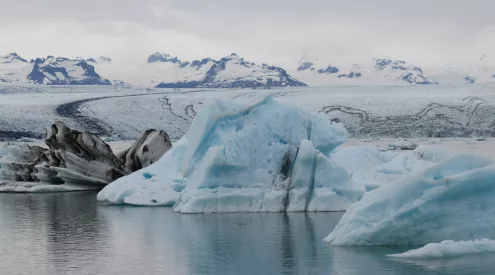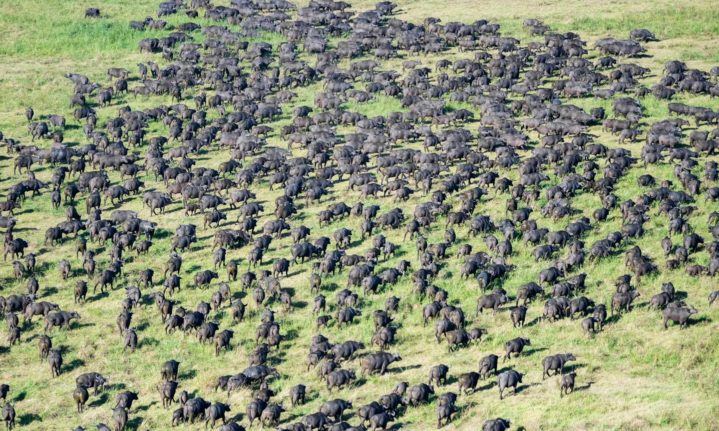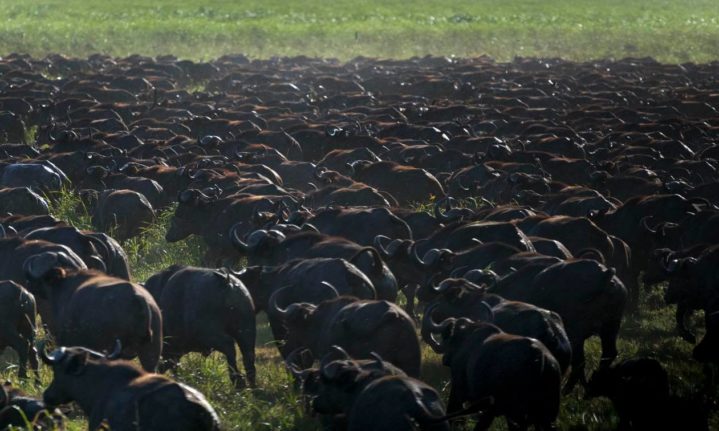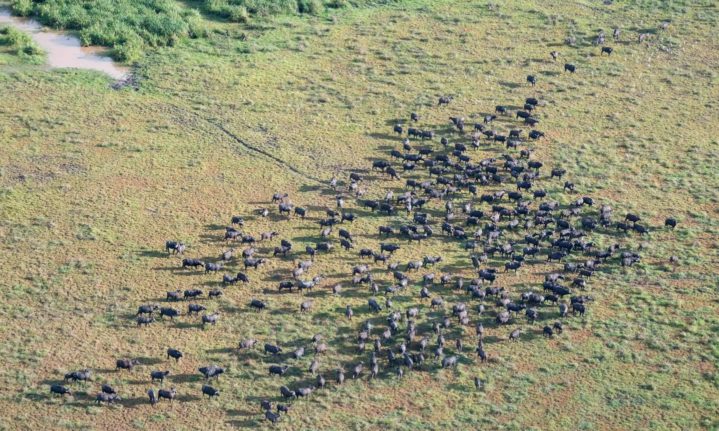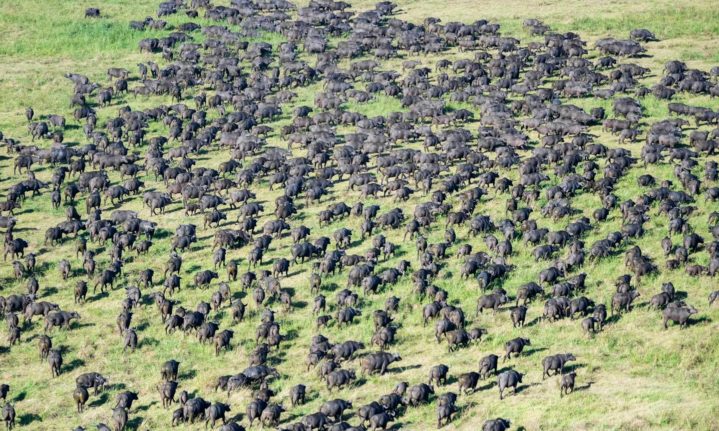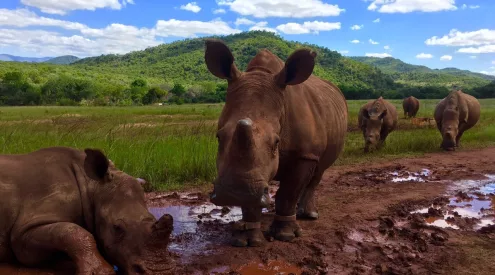The once thriving buffalo population along the Zambezi Delta in Mozambique plummeted to alarming numbers not too long ago.
During the height of the country’s civil war, these animals were poached and hunted for food until less than 2,000 buffalo remained from the original total, estimated between 30,000 and 50,000.
Then, anti-poaching measures were set in place through organisations such as Zambeze Delta Conservation together with the local community and over the last 25 years, numbers have steadily increased. Today, there are over 20,000 wild buffalo roaming the area.
‘As a result of bringing the natural order back into balance, a 3,000% increase across all species has been noted,’ says Ivan Carter, founder of the Ivan Carter Wildlife Conservation Alliance (ICWCA).
During the times of the civil war (fought between 1977 and 1992), there were only 44 sable antelope recorded in the ecosystem. Today, there is a population of around 3,000. There were also less than 100 zebra left, and today there are several hundred.
‘This really is one of Africa’s most amazing major wildlife recoveries,’ Carter added.
Take a look at the incredible buffalo herds grazing along the Delta, taken by Sean Viljoen for Zambeze Delta Conservation:
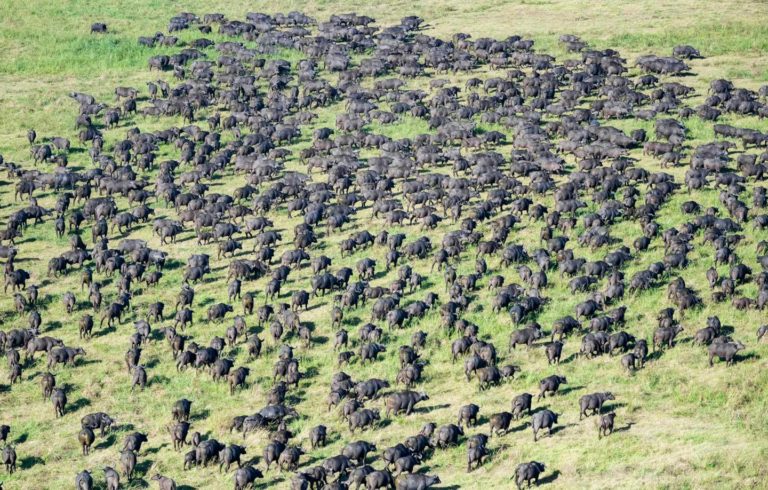
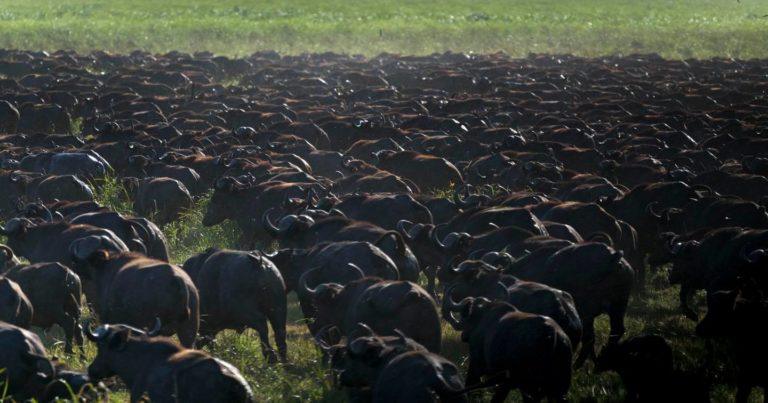
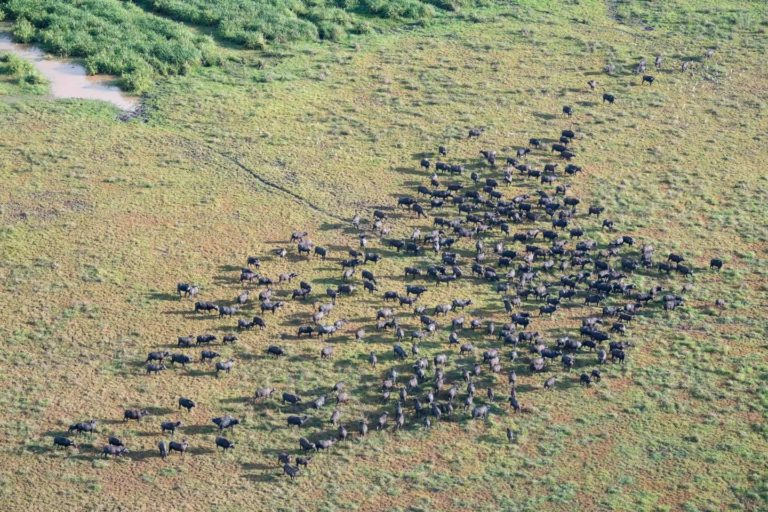
Zambeze Delta Conservation (ZDC) have started community programmes to decrease poaching, and increase community involvement in conservation.
In doing so, steps have been taken to be sensitive towards the reasons many poachers do what they do. Some are poverty stricken and are trying to provide for their families, or have not been educated on the effects of poaching on the ecosystem.
ZDC thus campaigned the government to issue a community quota of the more common animals. Today, that quota sits at 50 reedbuck and 1 buffalo and the organisation works with the village leaders to consume wildlife in a more sustainable way.
‘In more recent years through the help of a very kind client, we built a school and teachers’ houses, as well as water wells for the dry season,’ the organisation’s website reads.
Involving the community creates jobs and provides education as well as opportunities for development and growth.
‘A mobile corn mill is another of our efforts to assist and retain good relationships. It has to be a two-way street. If our unit arrests poachers from a particular village, we meet with the elders and discuss the issue, the norm being for the village’s meat allocation and milling privileges to be suspended for a few months.
‘Recently we have had poachers come and hand in their own traps for reward; they claim it isn’t worth the risk of being caught and risking the village’s privileges.’
To find out more or get involved, visit Zambeze Delta Conservation or Ivan Carter Wildlife Conservation.
Pictures: Sean Viljoen

